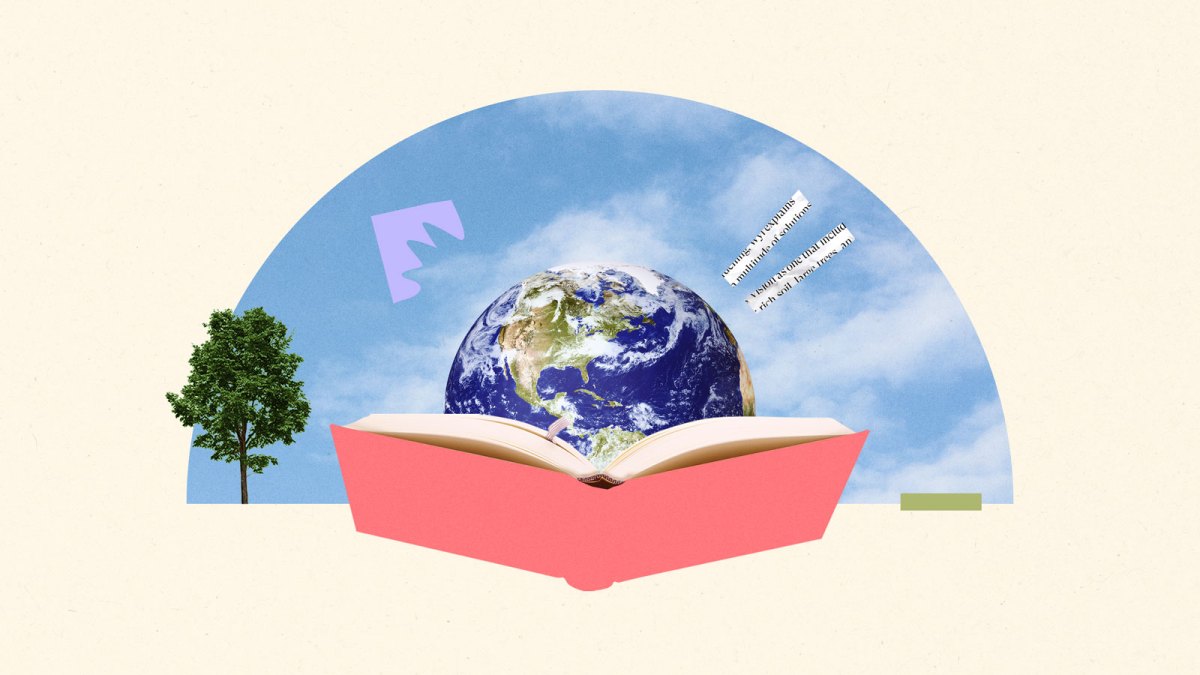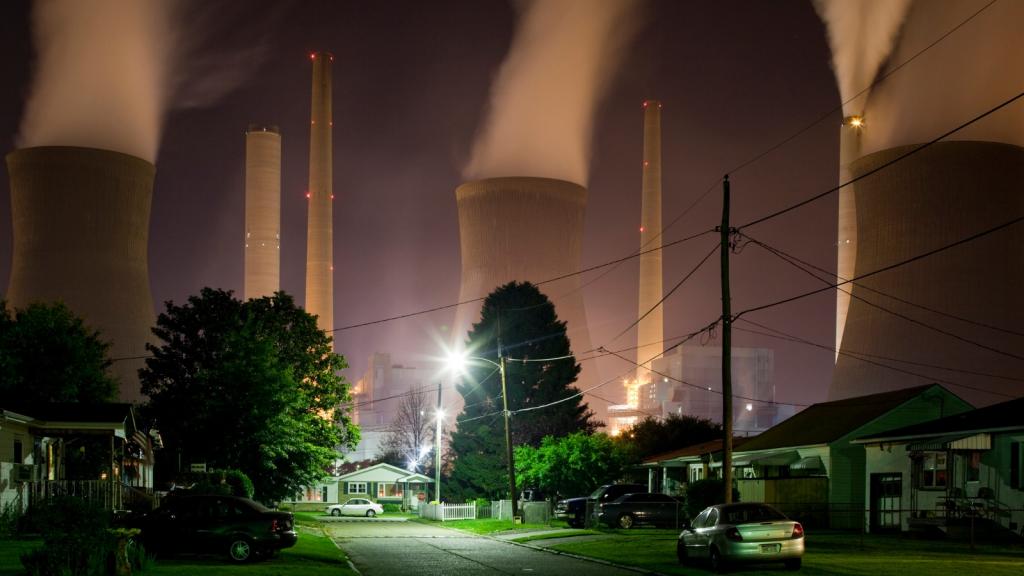
If anyone has recommended a climate-fiction novel to you in the past two years, I wouldn’t be surprised to hear that it was Ministry for the Future. Since hitting shelves in the fall of 2020, Kim Stanley Robinson’s 563-page tome has made an impression on readers in and beyond the growing world of cli-fi. It made it onto President Barack Obama’s favorites list for 2020, and has received praise from Bill Gates and Ezra Klein. It also came up as one of the most popular titles on the Looking Forward newsletter’s reader-recommended climate reading list last summer.
The book unfolds over three decades, beginning in 2025. It mixes nonfiction history and science with a plot that shows an intergovernmental body, the eponymous Ministry for the Future, advancing climate solutions that ultimately put humanity on a successful path to decarbonization. The ministry’s leader, Mary Murphy, forges an unlikely friendship with Frank May, a traumatized American aid worker who takes her hostage to try and move her to decisive action.
Although the book doesn’t shy away from showing some of the harrowing impacts of the climate crisis — like a deadly, devastating heat wave in India, of which May is one town’s only survivor — the full picture is one of hope. We see the world’s leaders grapple with the severity of the climate crisis, and embrace global-scale solutions that actually work.
Last month, the Looking Forward book club gathered to discuss Ministry for the Future, and were joined by Robinson for a Q&A about his work, his process, and his musings about our real-world future.
[Want to join future book clubs? Subscribe to Looking Forward now.]
Check out the recording below. We’ve also pulled out some highlights from the conversation, edited for length and clarity.
Q. This book stands out among climate fiction and science fiction generally, for a couple of reasons — one of which is the near-term setting. It’s interesting to see a cli-fi novel that takes place in a very imaginable, very close future. Could you talk a little bit about the decision to focus on the next few decades of both turmoil and figuring things out?
A. I think of myself as a science fiction writer — and I define science fiction as stories set in the future. The future is big, and that’s why science fiction has a variety of subgenres within it. If you’re 5 million years in the future, then it’s kind of a fantasy space, and that’s what people often think of when they think of science fiction. And then there’s near-future science fiction … a kind of a realism of our time, but you push a few elements.
I myself have occupied an in-between zone, like 100 to 300 years in the future. That’s an interesting and underutilized time zone in science fiction. But, in thinking about climate fiction, I was thinking there’s no reason to write about “later on.” It’s happening now. And I wanted to try describing the next three decades or so going as well as you could possibly believe in.
I wanted to do a best case scenario, so that people can see that although we are in extreme danger right now … there’s the potential for good results.
Q. Relatedly, I wanted to talk a bit about all the nonfiction elements of the book. Could you tell us a bit about all the research that went into making the book scientifically accurate, and the events realistic? And how you chose to structure it this way, with plot-driven chapters interwoven with chapters that are more like essays on real topics?
A. I would say a lot of my nonfiction in Ministry is somewhat concocted. It’s referring to real things, but it’s a meditation on them, a kind of prose poem on what they might mean. Things like Jevons paradox or the Bretton Woods story.
I was gonna write a novel about climate change. I was gonna start with a heat wave disaster, and then have a bunch of solutions from a bunch of bureaucrats. Well, why would anyone read that? It just doesn’t sound interesting. It’s kind of like castor oil, you know, good for you, but not fun. And I read novels for fun, just like everybody else. How was Ministry for the Future going to be fun? Well, I thought the play of forms [would make it fun] — it will be a game where every chapter, you don’t know what kind of text you’re going to be reading.
It could be a dialogue between two characters, who I thought of as the Smooth Host and the Grumpy Guest. [It could be] notes from meetings, rather than the meetings themselves. The eyewitness accounts, the riddles. I was trying to make it interesting as a literary event, as well as bringing the news about climate change and the possible solutions. And then, it had to have the main thing, too — it had to have Mary and Frank. Then I could hang a whole bunch of other organs and bones and flesh off of this spine, which was the Mary–Frank story. … It only took me about six months to write the book, because I had the right form in mind.
Q. I do want to talk a little bit about the main plot of the book as well, and the events that show us how the climate crisis gets dealt with in this version of the future. One of the things that stood out as a major theme was the role of the central banks and the market. I was curious about your decision to focus on a market-based approach as one of the main things that causes society to course correct.
A. I don’t like the market. And I don’t believe in it. I think giving over human decisions to the market is giving over decisions to a fool — an algorithm that is too simple. … What we have is algorithms that are maximizing profit by extracting too much out of the biosphere too fast.
So the market misallocates, it misvalues things, it undercuts and it steals from the future. The opposite of that in this formulation would be government — so public over private, government over business, the commons over property.
It is the global rule of law right now, that system [is what we have], and we are in a short-term emergency. So, a better system cannot be invented and installed instantaneously. We gotta work with what we’ve got, which is the nation state system and global capitalism, to solve climate change really fast. Or we’re in a mass extinction event.
What I wanted to do in the novel was show that you could take one step back to a perfectly legal system that’s been tried before, which is Keynesianism, in which government pushes the market around more than it did for the last 40 years in the neoliberal era. And that I think is possible, and that I’m even seeing happen. People are desperate. People see we’re coming at a crash, they see that neoliberal capitalism and the market system doesn’t work, and indeed is wrecking things.
Q. Another theme that I was curious about in the book was the role of violence — particularly the ministry’s clandestine black ops division. And the Children of Kali, an eco-terrorism organization that forces people to wake up to the cost of inaction on climate change. Is that something you see as inevitable as we go on with this crisis?
A. I don’t think it’s inevitable, and probably might be counterproductive. The actual Children of Kali that you run into are probably a little too idealistic about the success of their operations. My novel is a mess, the way history is a mess — and it doesn’t properly de-strand the differences between murder and sabotage. For that you need other books like Andreas Malm’s How To Blow Up a Pipeline or Erica Chenoweth’s Why Civil Resistance Works.
What I did in this book, being a pacifist and a person that doesn’t believe in advocating violence against other humans in any context, was to try to obscure what the ministry actually approved doing. Badim [Mary’s chief of staff, who oversees the ministry’s black wing], when he goes back and talks to the Children of Kali, he obviously feels he’s got blood on his hands. And so you have to wonder, what did he authorize? And what would you authorize if you were Badim?
The oil executives that have deliberately lied — ExxonMobil scientists made great predictions of what was going to happen back in the ’80s, and then ExxonMobil executives lied through their teeth for decades — these could be considered to be war criminals in a way, in a war against the earth. So if you’re in a war for the earth, there are gonna be some people that, if they see their whole village die and they’re the lone survivor, they’re gonna want revenge. And that’s what I wanted to write about, the anger that’s going to be unleashed on the world of human against human if we don’t honestly and quickly cope with climate change.
Q. I’m gonna pivot to some of the questions we’ve gotten in the chat from readers. Aaron asks: There are lots of reasons to write an anti-dystopian, ultimately hopeful book on these issues. I’d love to hear your reasons for writing this story this way, as opposed to, say, a post-apocalyptic cautionary tale.
A. Dystopia has a purpose, and post-apocalypse has a purpose. It can be a warning sign, like, “Don’t go this way, it’s bad.” Or it can be a metaphor for how things feel right now. The Hunger Games is a great example: We’re struggling against each other and we’re just entertainment for rich people. The message of The Hunger Games is a metaphor for how things are already for young people, [and it’s] very powerful. And then lastly, it can be comfort food. “Oh, these poor, desperate people, zombies are trying to eat their face, et cetera, et cetera.” And then you come back to your world and everything’s OK. You’re thinking, “Well, I don’t know how I’m gonna pay my medical bills. That’s bad, but at least zombies aren’t eating my face.”
At a certain point, dystopia has run its course of what it can do usefully. So then you need the positive stories. I’ve been writing utopias since about 1987, so that’s adding up to a lot of years of just trying to do the positive because I think we need it more. And it’s harder, technically — it’s less dramatic. But it’s interesting because you get new stories that haven’t been told before.
Watch the full conversation with Kim Stanley Robinson here.



